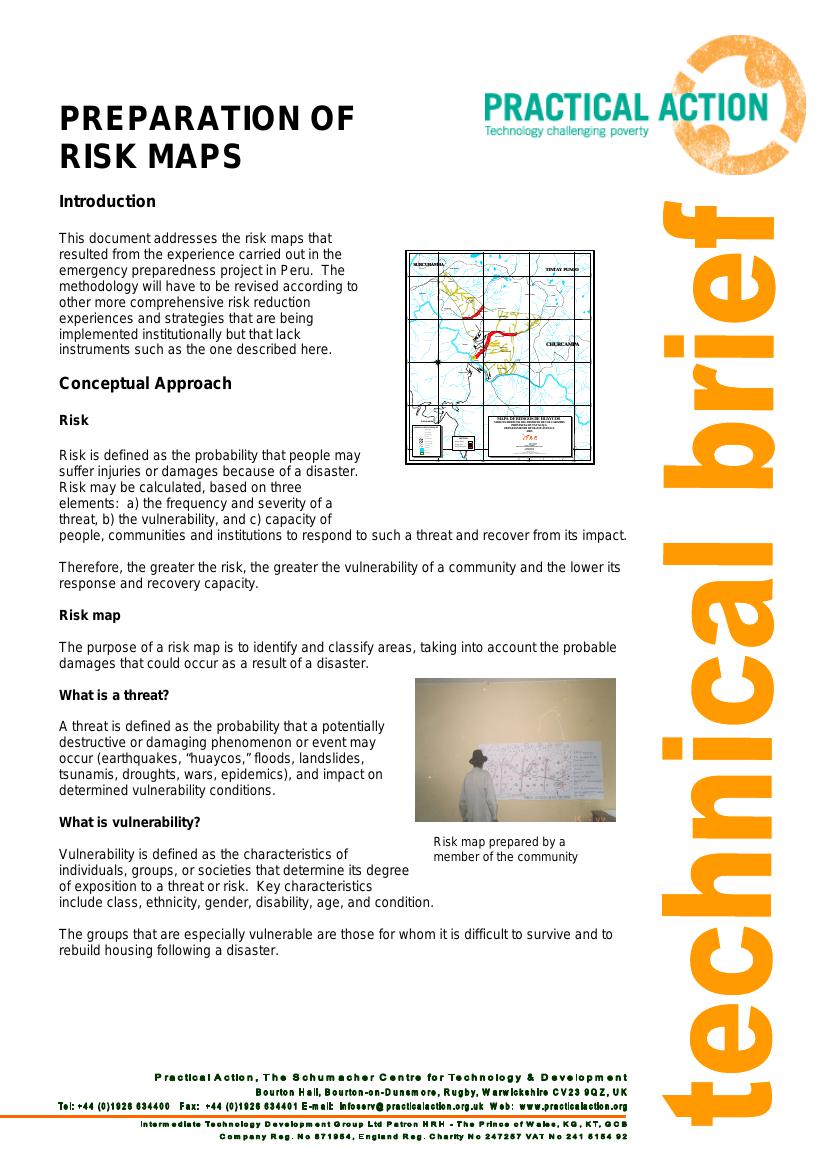This document addresses the risk maps that resulted from the experience carried out in the emergency preparedness project in Peru. The methodology will have to be revised according to other more comprehensive risk reduction experiences and strategies that are being implemented institutionally but that lack instruments such as the one described here.
Risk is defined as the probability that people may suffer injuries or damages because of a disaster. Risk may be calculated, based on three elements:
a) the frequency and severity of a threat,
b) the vulnerability, and
c) capacity of people, communities and institutions to respond to such a threat and recover from its impact.
Therefore, the greater the risk, the greater the vulnerability of a community and the lower its response and recovery capacity. The purpose of a risk map is to identify and classify areas, taking into account the probable damages that could occur as a result of a disaster.
